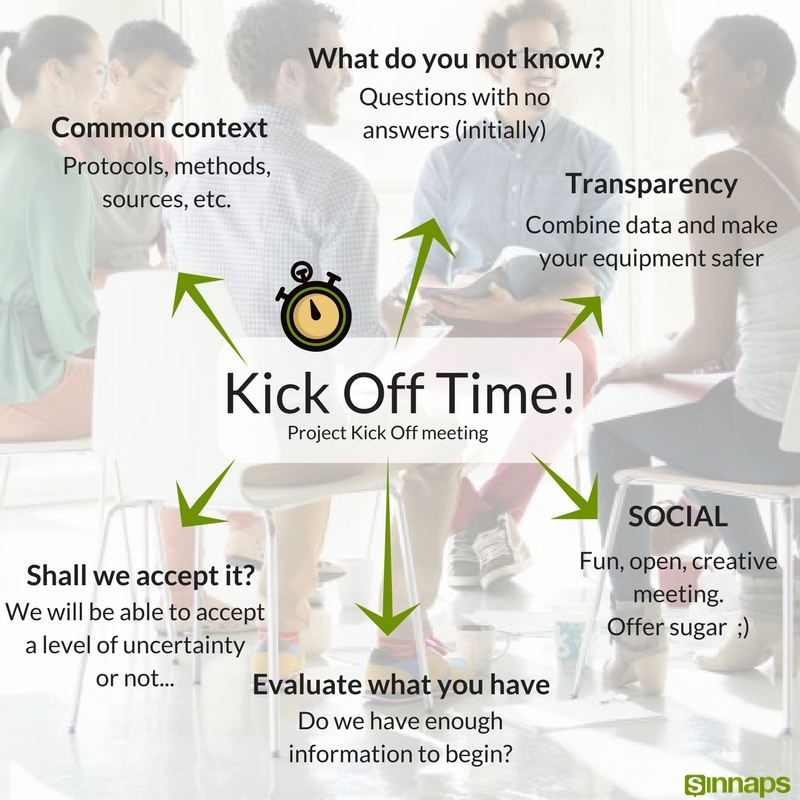The Scrum project management framework encourages Scrum stand-up meetings as a way for teams to learn about potential blockers to their project success as well as coordinate efforts targeted at resolving issues eating up on project time.

Although stand-up meetings hold particular value in Agile methodology, it is by no means limited to this framework, and can be applied to other methodologies as can be seen in Kanban daily stand-up meetings as well.

If you’re new to the concept of Scrum stand-up meetings, and are looking for a way to improve your meetings to meet specific objectives, you’d be amazed at the improvements your team will stand to achieve when you adopt Sinnaps online project management tool as a daily team meeting software/ Scrum tools for your projects. Easily prepare project reports, scrum dashboards and track your project progress.
In this article, we will discuss such concepts as Scrum stand-up meetings, daily Scrum meeting duration, etc., as well as how to conduct a team meeting and tricks for effective sprint meetings, why they’re called standing meetings and more.
All about Scrum
- Scrum Roles and Responsabilities
- Scrum Sprint
- Scrum Team
- Scrum Online Tools
- Scrum Methodology
- Kanban vs. Scrum
- Scrum Meeting
- Scrum Meeting
- Scrum IT
- Daily Scrum
- Scrum Values
- Agile Scrum Kanban
- Scrum Planning Tool
- Scrum Planning
- Scrum Project Plan
- Scrum Dashboard
- Scrum Retrospective
Índice
Scrum Stand-Up Meetings
What informs the idea of Scrum stand-up meetings? Well-run stand-ups go a long way in adding value to teams. And to keep things short and ensure everyone pays attention, members are made to stand up throughout the entire meeting which typically has a duration of 5 to 15 minutes.
Scrum stand-up meetings are a way of ensuring focus and accountability among team members. Each member knows what they’ve done, what they will do as well as find ways to overcome obstacles that may impede growth.
Online Free Project Management Course
You will receive 5 lessons over the course of 15 days
Lesson 2: Plan your project and prepare a substantive Kick Off meeting.

Scrum Daily Stand-Up Meeting
Scrum daily stand-up meetings are about keeping the team on the same page on all levels, including business, project or even personal levels. The short timeframe allotted to these daily morning meetings in no way suggests that important issues raised, but were not addressed for lack of time should be swept under the rug. Rather, they are to be documented for proper review by the development team.
Scrum daily stand-up meetings is not a new concept, but a lot of project teams are not putting in just the right amount of effort to actually produce effective results. One of such reason is due to the perception that stand-up meetings are a waste of time, or keeps the development team from doing actual work. This is however not true, and such school of thought must be done away with.
Daily Scrum Meeting Duration
Ensuring strict adherence to specific time-boxing for Agile meetings/ weekly Scrum meetings is key to securing higher efficiency through collaboration and communication for the entire team with direct bearing on the project success. Daily Scrum meeting duration for a sprint length covering 1 week generally ranges from 5 – 15 minutes. One way to ensure effectiveness and stick to daily Scrum meeting durations as stipulated is to ensure backlogs are properly refined and prioritized beforehand.
Sprint Meetings
As a core concept of the Scrum methodology, a sprint meeting or Scrum kickoff meeting takes care of all the aspects of planning, communication and collaboration geared towards delivering the product of the project. For effective stand-up meetings in Scrum, it is advisable to have a clear-cut sprint planning meeting agenda readily available.
Standing Meetings
Searching for stand-up meeting rules and ideas you could incorporate to make your meetings more effective? Let’s look at a couple of ideas on how to run a Scrum meeting.
What happens in a Scrum sprint planning meeting?
This is attended by the Scrum development team, the ScrumMaster as well as the development team. In this meeting, the product owner describes in the clearest possible terms, the highest priority features if the project to the team.
Ideas for a sprint retrospective meeting
At the end of each sprint, there is a sprint review and after this, a Sprint retrospective meeting is held. During the sprint retrospective, the team will work to recognize the various elements of the sprint that did, or did not work, as well as identify solutions to improvement.
How to Run A Stand-Up Meeting – Tricks
- Ensure the team is standing – Standing has a sort of physiological effect on the body’s ability to retain long-term information. This is partly because standing engages the muscles and also ensure the meeting is brief.
- Employ proven solutions and tools – For typical teams engaging in remote collaboration, choose a collaboration tool that is easy to use and tailored to your needs – Sinnaps is highly recommended.
- Create variety – Since these meetings involve typical repetitions, it could become boring over time. Adding variety, i.e., varying the routine, including how you pick people who speak, etc., can rekindle interest.
- Focus on the core concept of the meetings – Ensure that your meetings revolve around project accomplishments, goals as well as obstacles and how to mitigate them.
- Meeting must be time-boxed – Assigning a timeframe for activities creates a sense of urgency and keeps speakers in check while providing the opportunity for others to contribute.
Hopefully, you have gained a bit of an insight on the concept of Scrum stand-up meetings. Now, all that is left is proper implementation, and you can get your team on the road to increased effectiveness and productivity.




[…] Scrum Stand-up […]